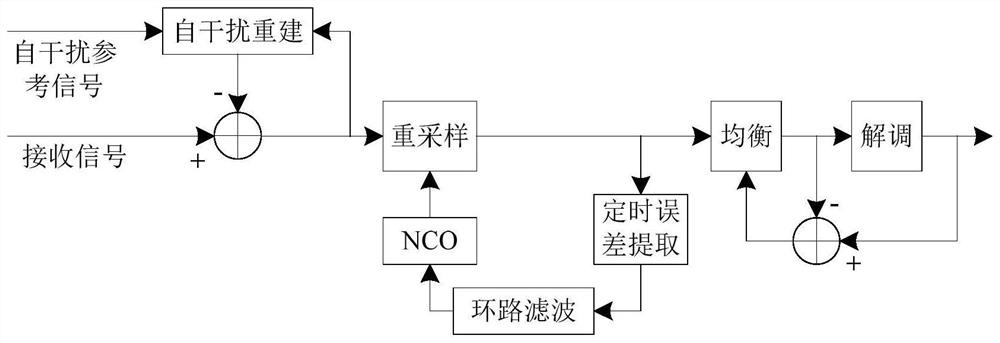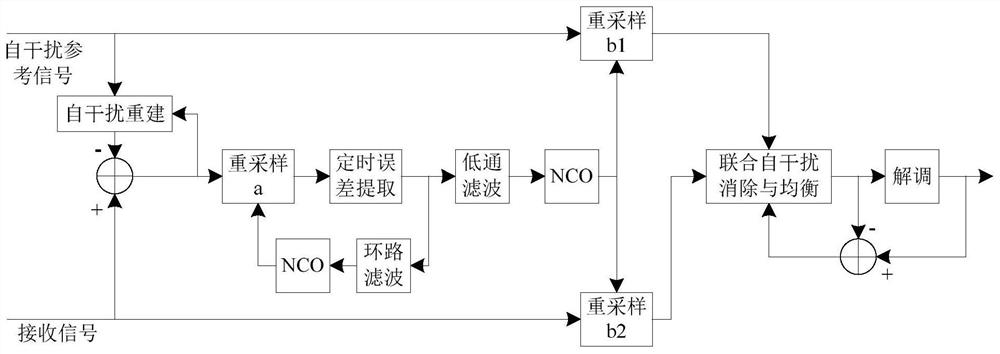A method for receiving simultaneous and same-frequency full-duplex signals
A same-frequency full-duplex, signal receiving technology, applied in transmission systems, electrical components, etc., can solve the problems of difficult control of self-interference residual, slow convergence speed, poor self-interference elimination ability, etc., to enhance self-interference elimination ability , Relieve the implementation pressure and improve the effect of receiving performance
- Summary
- Abstract
- Description
- Claims
- Application Information
AI Technical Summary
Problems solved by technology
Method used
Image
Examples
Embodiment Construction
[0034] The present invention will be further described below in conjunction with the accompanying drawings and embodiments.
[0035]The present invention will start from the self-interference reference signal and the received signal, jointly perform self-interference cancellation and useful signal equalization, and use the demodulation error of the useful signal to drive the entire joint adaptive process. In this way, the demodulation error does not contain the useful signal after convergence. Therefore, this signal receiving method can avoid the restriction of the self-interference cancellation capability by the useful signal. The joint self-interference cancellation and equalization needs to align the clocks of the self-interference reference signal and the received signal to the best sampling point of the useful signal, so that the demodulation of the useful signal can be performed correctly. However, in the self-interference reference signal and the received signal, the us...
PUM
 Login to View More
Login to View More Abstract
Description
Claims
Application Information
 Login to View More
Login to View More - R&D
- Intellectual Property
- Life Sciences
- Materials
- Tech Scout
- Unparalleled Data Quality
- Higher Quality Content
- 60% Fewer Hallucinations
Browse by: Latest US Patents, China's latest patents, Technical Efficacy Thesaurus, Application Domain, Technology Topic, Popular Technical Reports.
© 2025 PatSnap. All rights reserved.Legal|Privacy policy|Modern Slavery Act Transparency Statement|Sitemap|About US| Contact US: help@patsnap.com



